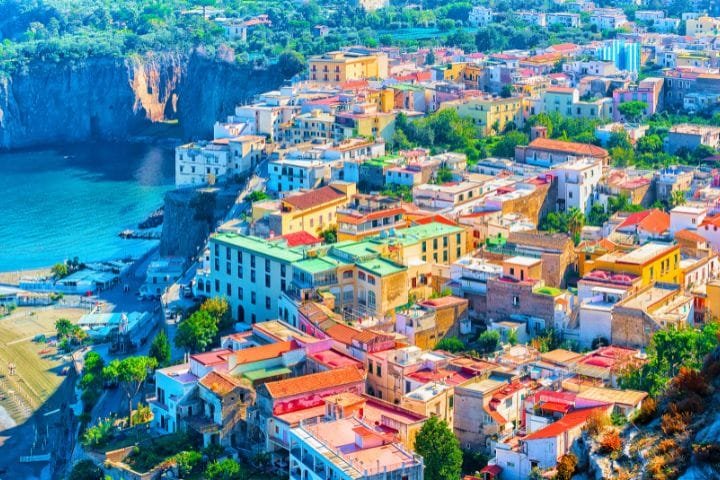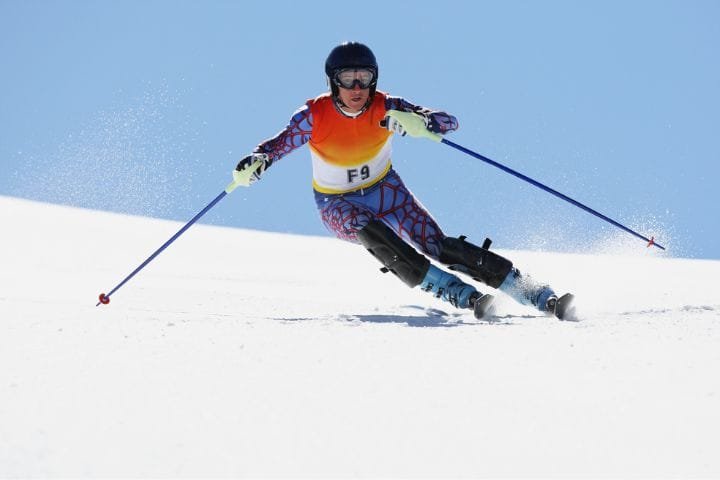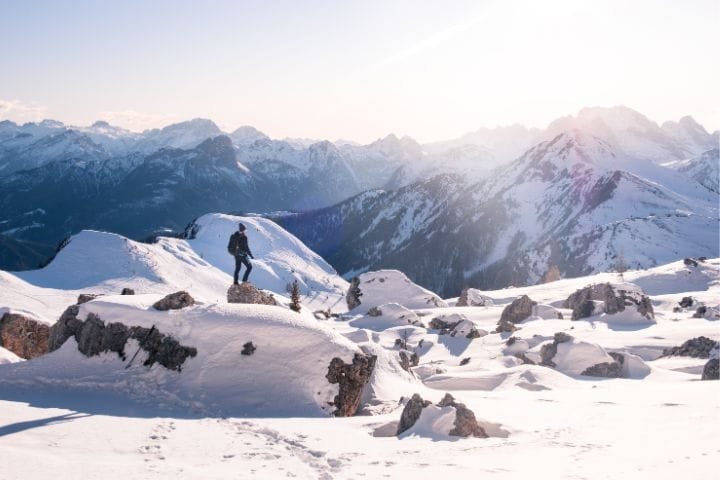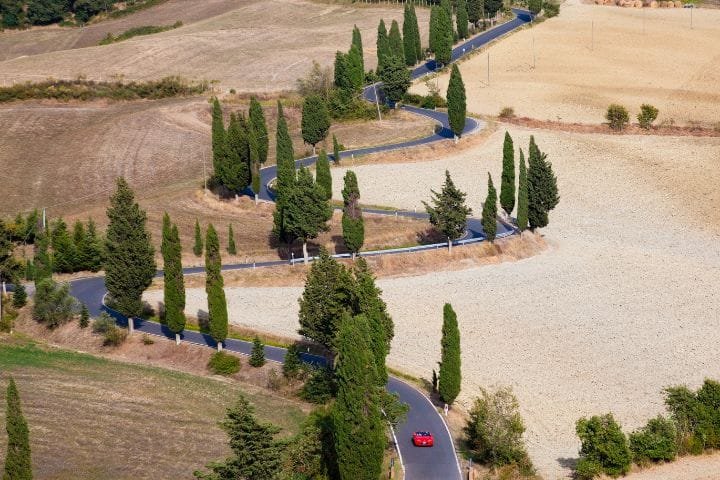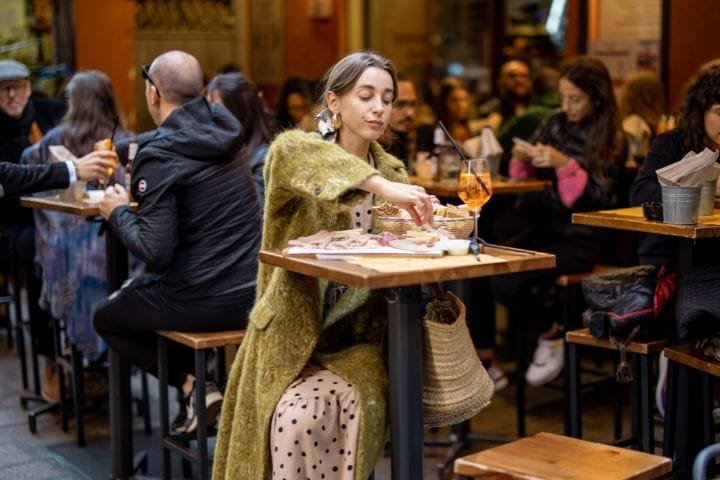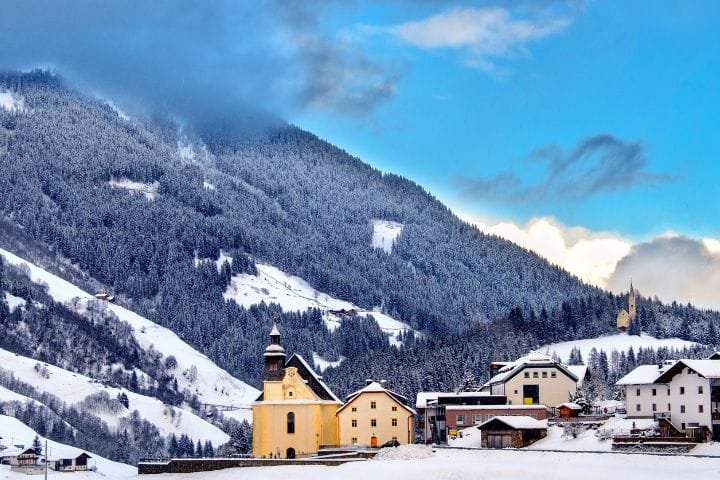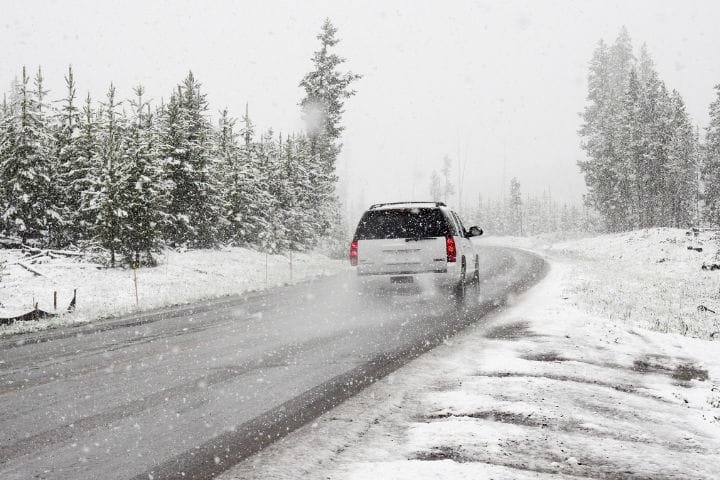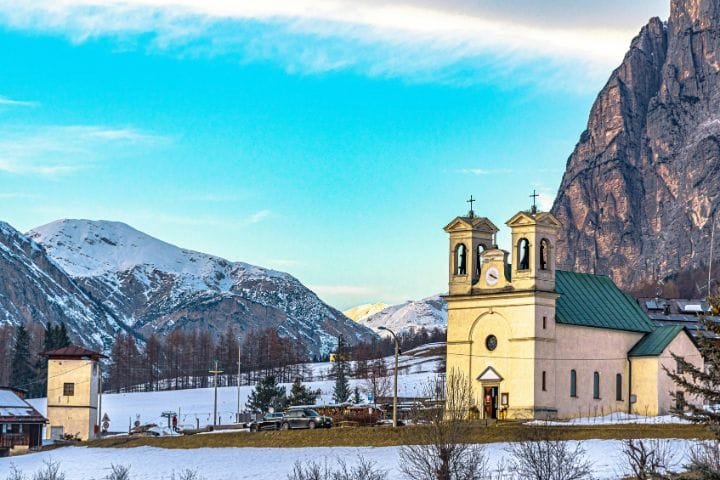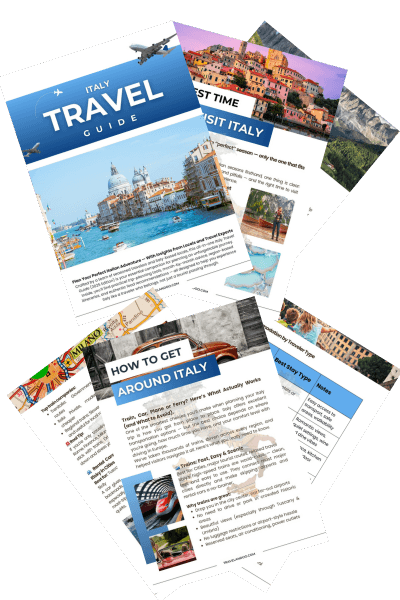Driving from Rome to Milan: Best Stops, Routes & Hidden Gems (2025)

by Luca | Last Updated December 19, 2025
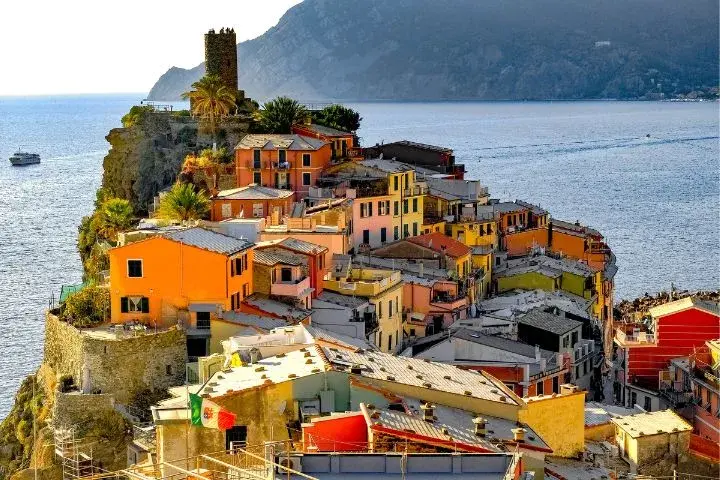
Ciao! As a Florentine who’s been making drives between Rome and Milan for years – first exploring Italy’s political and economic capitals during university breaks, then countless times for work connecting these major cities, and now showing visitors the incredible diversity that exists along this legendary route through my beloved central Italy.
I can tell you that this journey represents the ultimate Italian road trip experience, crossing through virtually every major Italian region and cultural zone while perfectly showcasing why Florence sits at the heart of Italian civilization.
Here’s what will completely transform your perspective: the 574-kilometer drive from Rome to Milan takes you through 2,000 years of Italian civilization, from ancient Roman settlements through medieval republics, Renaissance city-states, and finally into the industrial sophistication that drives modern Italy’s economy.
When you choose scenic routes over the direct autostrada, you’ll discover hidden gems that most tourists never see – medieval hilltop towns where time stopped centuries ago, thermal springs used since Roman times, and Renaissance masterpieces in unexpected small cities that rival anything in famous museums.
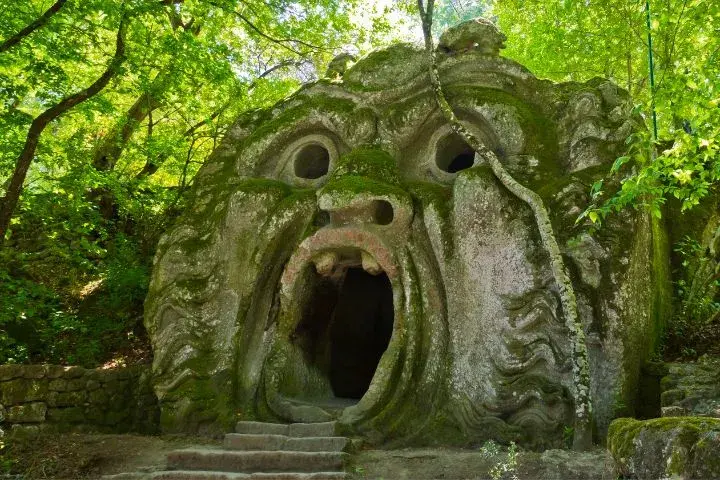
🧭 How This Rome–Milan Drive Fits Into an Italy Road Trip
This long northbound drive works best when broken into scenic, food-focused regions.
- Combine multiple regions into one journey → Best scenic drives in Italy
- Avoid rushing and plan realistic driving days → How to plan a perfect Italy road trip
Route Planning: Fast vs. Scenic Options from Rome to Milan
Allora, after twenty-eight years of making this Rome to Milan drive countless times, I can tell you that choosing between fast and scenic options completely transforms your Italian experience.
The direct A1 highway (autostrada) takes about 5.5 hours and costs roughly €45 in tolls, but you’ll see nothing except truck traffic, service areas, and industrial landscapes that could be anywhere in Europe. During peak periods, this “fast” route becomes a parking lot where you’ll spend eight hours crawling through traffic instead of discovering medieval masterpieces.
My favorite western scenic route goes through Tuscany’s hill towns, then crosses into Liguria’s coastal mountains before approaching Milan from the lakes region. This adds about three hours but includes some of Italy’s most spectacular landscapes and authentic cultural experiences.
The eastern cultural route via Umbria, Bologna, and Emilia-Romagna showcases Italy’s artistic and culinary heart with UNESCO sites, incredible food traditions, and Renaissance cities that preserve authentic Italian culture. This path easily fills 4-5 days with meaningful discoveries.
The central wine country route through Chianti and Piedmont provides constant vineyard scenery, family estate visits, and tasting opportunities that showcase Italian wine culture from Tuscany’s Sangiovese to Piedmont’s noble Nebbiolo varieties.
For adventure seekers, hidden gems routes lead to spectacular discoveries like Civita di Bagnoregio’s dramatic cliff-top setting, Bomarzo’s surreal Renaissance gardens, or thermal springs that have provided wellness experiences since Roman times.
Distance varies from 570km direct to 850km scenic, but the extra kilometers include some of Italy’s greatest undiscovered treasures. Plan a minimum of three days for cultural exploration, though you could spend two weeks discovering central and northern Italian gems.
- Avoid summer weekend travel – traffic transforms highways into parking lots for hours
- Plan regional overnight stops – the best discoveries require time to appreciate properly
- Choose routes by interest – food, wine, art, or nature focus determines optimal paths
🛣️ Scenic Routes Starting from Rome
Choosing the scenic option opens up Tuscany, Umbria, and western Italy detours.
- Countryside-focused alternative heading north → Driving from Rome to Florence with must-see stops
- Wine towns and medieval landscapes route → Driving from Rome to Siena through Tuscany
- Western Tuscany and coastal option → The most scenic drive from Rome to Pisa
Essential Preparation for Your Rome to Milan Adventure
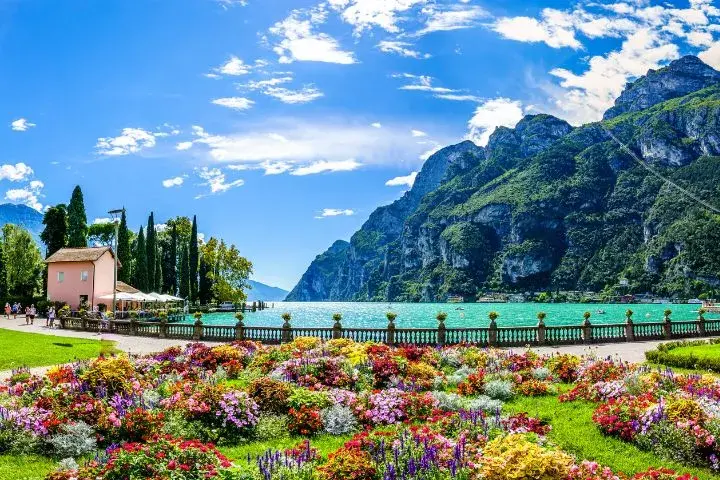
Rome departure strategies require understanding that escaping the metropolitan area during rush hours can add three hours to your journey before reaching the open countryside. Leave very early (before 6 AM) or mid-morning (after 10 AM) to avoid commuter traffic chaos.
Vehicle selection should balance comfort for long distances with maneuverability for medieval town centers. Italian rental cars are typically smaller than American vehicles, but they’re perfectly suited for our road conditions and parking realities.
Navigation planning requires offline maps because mountain areas and rural regions often lack reliable cell coverage. Download detailed maps for entire regions before departure, and carry backup navigation because GPS systems sometimes struggle with ancient road networks.
Accommodation booking strategies depend on your route choice. Highway hotels offer convenience but no character, while historic center properties provide an authentic atmosphere requiring advanced reservations. Countryside agriturismo balances both with cultural immersion.
Budget planning should account for significant regional variations in pricing, from reasonable central Italian costs to expensive northern lake regions. Wine tastings, museum entries, and authentic dining experiences add substantial costs but provide irreplaceable cultural education.
Documentation, including International Driving Permits and insurance papers, must be easily accessible because northern Italian police conduct frequent checks, especially in tourist areas and around major cities where regulations are strictly enforced.
Weather considerations vary dramatically by region and season. Mediterranean warmth in Rome transitions to Alpine conditions approaching Milan, sometimes requiring different clothing for the same day.
- Plan Rome departure timing carefully – metropolitan traffic patterns affect the entire journey
- Download comprehensive offline maps – rural areas have unreliable cell coverage
- Budget for regional price differences – northern Italy costs significantly more than the central regions
Plan Your Trip with Our Favorite Booking Tools
Central Italy Treasures: Umbria and Tuscany Hidden Gems
Orvieto creates one of Italy’s most dramatic urban landscapes as this cathedral city crowns a volcanic plateau rising vertically from surrounding valleys. The Gothic cathedral facade appears carved from lace, while underground Etruscan caves reveal 3,000 years of continuous occupation.
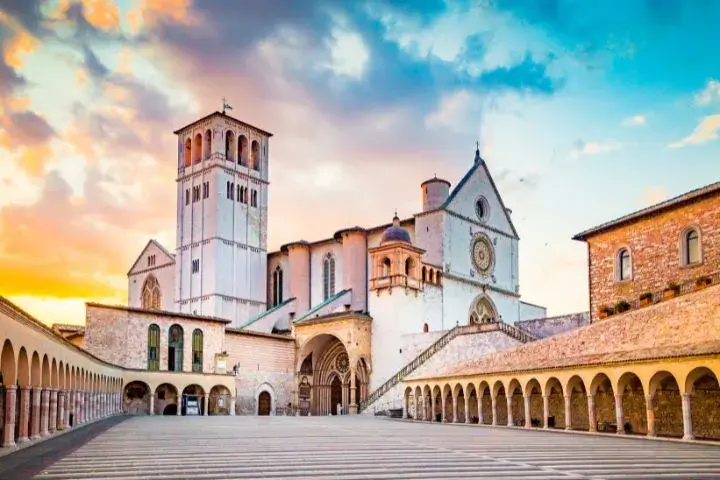
Assisi combines a spiritual atmosphere with artistic treasures, including Giotto’s revolutionary frescoes in the Basilica of St. Francis. The medieval streets climbing toward the fortress provide peaceful walks with panoramic views across Umbrian valleys dotted with ancient settlements.
Siena showcases Gothic architecture and medieval urban planning at their finest. The shell-shaped Piazza del Campo hosts the famous Palio horse race, while the cathedral complex contains artistic treasures that rival anything in Rome or Florence, with a fraction of the crowds.
San Gimignano’s medieval towers create Italy’s most distinctive skyline, but the real discoveries happen in family wineries surrounding the town, where Vernaccia wine has been produced since medieval times. These intimate tastings provide cultural education that is impossible in tourist-focused establishments.
Volterra perches dramatically on ancient Etruscan foundations with alabaster workshops that continue traditions spanning millennia. The Roman theater, Etruscan museum, and medieval streets create comprehensive historical experiences in authentic settings.
Hidden Tuscan villages like Montefioralle, Volpaia, or Radda preserve authentic character where traditional life continues largely unchanged. These discoveries reward curious travelers willing to explore beyond obvious tourist circuits with genuine cultural immersion.
- Book Assisi basilica visits during optimal lighting for Giotto fresco appreciation
- Explore beyond famous attractions – authentic discoveries happen in unexpected places
- Stay overnight in historic centers for a magical evening and morning atmosphere
🏛️ Slow-Travel Routes Through Central Italy
Umbria and Tuscany shine when you slow down and explore by car.
- Backroads, vineyards, and hilltop villages → Tuscany scenic drives
- Food-and-wine driven Tuscany journey → Epic Milan to Florence drive
- Big-picture inspiration across regions → Italy driving holiday ideas
Emilia-Romagna: Italy’s Culinary Capital and Cultural Powerhouse
Bologna absolutely transformed my understanding of Italian culture when I first lived there as a student. This sophisticated university city combines incredible food traditions with Renaissance architecture and contemporary energy that creates authentic Italian urban experiences.
Modena’s traditional balsamic vinegar production provides mind-blowing education about patience and precision in Italian food culture. Visiting vinegar factories, where 25-year-aged balsamic costs €200 for 100ml, changes your understanding of authentic Italian products forever.
The pasta-making traditions here are sacred to Italian culture. Watching Bolognese sfogline create tortellini by hand – each one exactly 7mm according to Chamber of Commerce specifications – reveals devotion to perfection that approaches religious fervor.
Parma combines incredible food heritage with sophisticated cultural attractions. Parmigiano-Reggiano factories, prosciutto producers, and traditional restaurants create a comprehensive culinary education, while Correggio frescoes and elegant architecture showcase Renaissance artistic achievement.
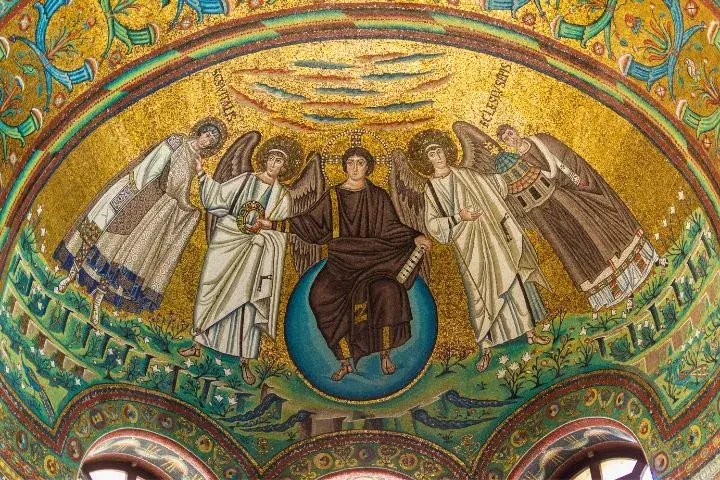
Ravenna houses the Western world’s finest Byzantine mosaics in multiple UNESCO sites that demonstrate early Christian artistic achievement. These spectacular works rival anything in Istanbul while receiving minimal tourist attention compared to their historical importance.
Ferrara presents perfect Renaissance urban planning by the Este family, who created ideal city layouts that influenced European development. The Castello Cathedral and surrounding countryside offer cultural experiences that reveal northern Italian sophistication.
Regional food experiences throughout Emilia-Romagna provide authentic encounters with traditional producers, family osterie, and local markets that showcase ingredients and techniques defining Italian cuisine worldwide.
- Visit traditional producers directly – authentic experiences happen at source locations
- Book guided food tours with locals who understand traditional preparation methods
- Try regional specialties in their places of origin for authentic flavors
Northern Italy Sophistication: Lombardy Approaches to Milan
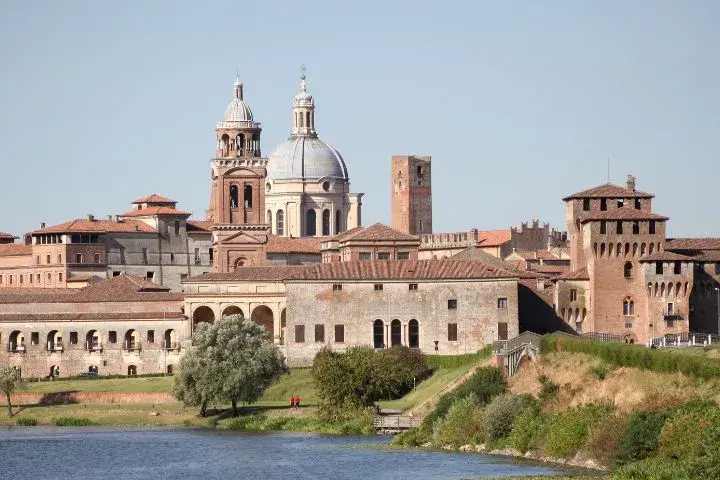
Mantua showcases Renaissance perfection through Gonzaga palace complexes that rival Versailles in artistic achievement while maintaining intimate Italian character. The Ducal Palace contains incredible frescoes by Mantegna, while the city’s lakeside setting provides a romantic atmosphere.
Cremona continues violin-making traditions where Stradivarius created instruments that set global standards for musical excellence. Workshop visits reveal artisan skills passed through generations, while the cathedral and medieval center provide beautiful urban exploration.
Brescia combines Roman archaeological sites with Lombard architecture in UNESCO complexes that demonstrate northern Italy’s strategic importance throughout European history. The museums house incredible artifacts, while the medieval center maintains an authentic local atmosphere.
Lake region detours toward Como or Garda provide spectacular Alpine scenery with luxury resort experiences that showcase northern Italian sophistication. These routes add time but offer relaxation and natural beauty that contrast beautifully with cultural intensity.
Bergamo’s medieval Città Alta, accessed by historic funicular, creates dramatic urban experiences with panoramic views across Lombard plains toward Alpine peaks. The upper city preserves perfect medieval character, while the lower city demonstrates contemporary Italian prosperity.
Lombardy wine experiences focus on Franciacorta sparkling wines that rival Champagne quality, plus Valtellina reds grown on dramatic Alpine terraces. These tastings often include spectacular mountain scenery that enhances wine appreciation significantly.
- Combine cultural sites with natural beauty for balanced northern Italian experiences
- Book Palace tours in advance – access to private areas requires reservations
- Try Franciacorta wines – northern Italian sparkling wines offer exceptional quality
Off-the-Beaten-Path Hidden Gems Along the Route
Civita di Bagnoregio provides absolutely spectacular drama as this “dying town” perches on eroding volcanic cliffs accessible only by a narrow pedestrian bridge. The medieval streets, incredible views, and tragic beauty create unforgettable emotional experiences.
Bomarzo’s Monster Park creates surreal Renaissance experiences with bizarre sculptures carved directly into volcanic rock. This 16th-century garden confuses and amazes visitors while providing unique artistic encounters impossible anywhere else.
Dozza transforms a medieval village into an outdoor art gallery where contemporary artists create murals on ancient walls. This unique fusion of historical architecture with modern artistic expression creates fascinating cultural experiences.
Sabbioneta represents perfect Renaissance urban planning as an “ideal city” built from scratch according to Renaissance principles. This UNESCO site demonstrates theoretical urban design implemented practically with incredible results.
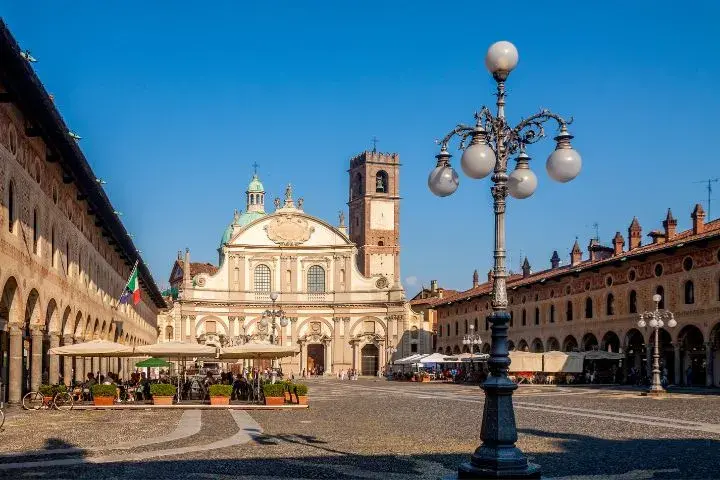
Vigevano’s Piazza Ducale creates one of Italy’s most beautiful Renaissance squares with perfect proportions and elegant architecture that influenced European urban development. The ducal palace and surrounding arcades provide sophisticated architectural education.
Thermal springs throughout central Italy offer natural wellness experiences in stunning settings where mineral-rich waters cascade through limestone terraces. These springs have attracted bathers since Roman times, creating relaxing stops with historical significance.
- Visit hidden gems during off-peak periods for authentic experiences without crowds
- Research opening hours carefully – smaller sites have limited schedules
- Respect local communities – these aren’t tourist attractions but living places
Regional Cuisine Journey: Flavors from South to North
Roman classics like carbonara, cacio e pepe, and amatriciana showcase central Italian cuisine that emphasizes perfect technique with simple ingredients. Authentic preparation requires understanding traditional methods that many tourist restaurants ignore completely.

Umbrian specialties, including truffles, Castelluccio lentils, and wild boar preparations, reflect the region’s agricultural heritage and foraging traditions. These earthy flavors contrast beautifully with Roman sophistication while maintaining authentic central Italian character.
Tuscan excellence balances simplicity with quality through bistecca alla Fiorentina, Chianti wines, and bread traditions that reflect historical necessity and cultural identity. Understanding these connections enhances appreciation beyond simple consumption.
Emilian richness demonstrates northern Italian prosperity through pasta traditions, aged cheeses, and balsamic vinegar that showcase perfectionist food culture. Every meal here teaches something about Italian culinary heritage and regional pride.
Lombard refinement reflects international influences through risotto preparations, polenta traditions, and sophisticated wine culture that demonstrates northern Italian cosmopolitan character while maintaining regional identity.
Regional wine transitions from central Italian Sangiovese through northern Italian Nebbiolo reveal how geography and climate create distinct flavors that define regional identity and cultural pride throughout the peninsula.
- Follow regional food timing – lunch and dinner schedules vary significantly by region
- Try local specialties in their places of origin for authentic preparation and ingredients
- Learn basic food vocabulary – understanding enhances ordering and cultural appreciation
Practical Tips and Local Insights for the Rome-Milan Drive
Traffic patterns follow predictable schedules that smart travelers use for a timing advantage. Friday afternoons and Sunday evenings create massive congestion, while early morning and late evening provide optimal highway conditions.
Toll road costs accumulate quickly on this long journey, with total expenses of around €45 for direct routes—budget additional costs for scenic alternatives that avoid tolls but require more fuel and time for longer distances.
Parking strategies in Milan or Rome’s historic centers require understanding ZTL restrictions and limited availability. Many towns offer parking outside walls with shuttle service, while others require walking significant distances from the car to attractions.
Weather considerations vary dramatically from Mediterranean warmth in Rome to potential Alpine conditions approaching Milan. Pack layers and check forecasts because temperature differences can exceed 15°C between departure and arrival.
Emergency services throughout Italy are excellent and accessible through 112, but response times vary by location. Program important numbers and carry basic emergency supplies, including reflective vests required by law.
Cultural etiquette changes subtly as you travel north from Roman expressiveness through Tuscan restraint to Lombard efficiency. Understanding these regional differences enhances social interactions and demonstrates cultural awareness.
Regional customs regarding dining, shopping hours, and social interactions vary significantly between central and northern Italy. Flexibility and observation help you adapt appropriately to local expectations.
- Plan fuel stops strategically – highway stations charge premium prices compared to local alternatives
- Respect regional pace – rushing destroys cultural appreciation and authentic experiences
- Carry emergency equipment – reflective vests and warning triangles are legally required
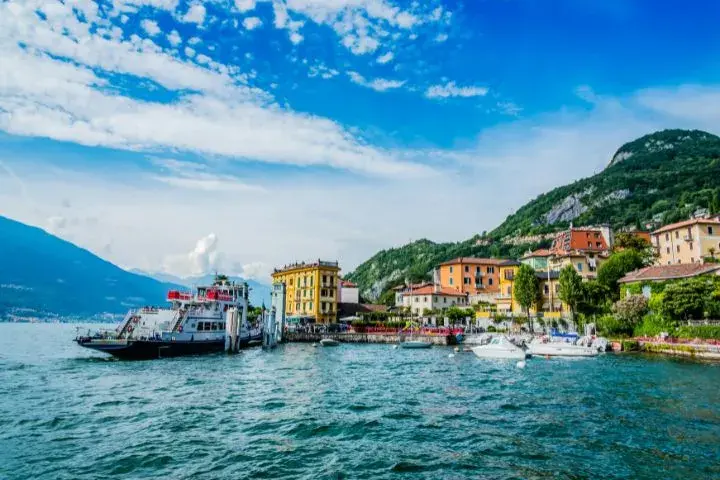
Your drive from Rome to Milan will reveal the incredible diversity and sophistication that make Italy one of the world’s most fascinating countries! This journey connects the eternal city with the economic capital through landscapes, cultures, and experiences that showcase everything extraordinary about Italian civilization developed over two millennia.
As someone who has made this journey countless times and continues discovering new treasures along these routes, I can promise you that the Rome-Milan drive offers unparalleled opportunities to understand Italian regional diversity, cultural development, and contemporary life.
Whether you’re exploring Etruscan sites that predate the Colosseum, tasting balsamic vinegar aged longer than most countries have existed, discovering Renaissance masterpieces in unexpected small cities, or simply enjoying meals with local families who embody regional pride, every kilometer reveals new aspects of Italian excellence.
Buon viaggio attraverso il cuore d’Italia! Safe travels through the heart of Italy! Andiamo a scoprire la vera Italia!
Plan Your Trip with Our Favorite Booking Tools
FAQs About Driving from Rome to Milan
How long does it take to drive from Rome to Milan, and what does it cost?
The direct A1 autostrada route takes 5.5-6 hours, covering 574 kilometers, with highway tolls costing approximately €40-45. However, traffic during peak periods (Friday afternoons, Sunday evenings, and summer weekends) can extend this to 8-10 hours of frustrating delays. The scenic route through Tuscany, Umbria, and Emilia-Romagna’s food capitals can easily fill 3-4 days with incredible cultural discoveries. Budget additional costs for fuel (around €70-90) and consider that highway gas stations charge premium prices compared to local alternatives.
What are the essential stops that make the Rome to Milan drive worthwhile?
Florence for Renaissance masterpieces, Bologna for incredible food culture, and Siena for Gothic medieval splendor represent must-see stops that transform transportation into cultural education.
Florence requires careful ZTL planning but offers unmatched artistic treasures. Bologna provides authentic pasta traditions, a university atmosphere, and sophisticated architecture.
Should I take the direct highway or explore scenic routes through central Italy?
The direct A1 autostrada is the fastest but reveals nothing of Italian culture, while scenic routes through Tuscany, Umbria, and Emilia-Romagna showcase authentic Italian heritage.
Highway travel suits extremely tight schedules but misses medieval hill towns, wine regions, thermal springs, Renaissance art, and culinary experiences accessible only by car.
How do I avoid expensive ZTL fines in Italian cities along the route?
Download ZTL apps before departure and avoid driving in historic city centers entirely – park outside restricted areas and walk or use public transport.
Florence, Bologna, Siena, and other cities have extensive restricted zones with automatic cameras generating €100+ fines weeks later. Look for blue “P” parking signs outside city walls, use designated tourist parking areas, or choose accommodations with included parking.
When is the best time to make the Rome to Milan drive to avoid traffic and crowds?
Spring (April-May) and autumn (September-October) offer optimal weather with manageable traffic, while early morning departures (before 7 AM) or late morning starts (after 10 AM) avoid metropolitan rush hours. Absolutely avoid summer Friday afternoons and Sunday evenings when vacation traffic creates gridlock lasting hours around major cities.
🏁 Build a Complete Scenic Italy Route
Use the Rome–Milan drive as the backbone for a longer Italian adventure.
- Choose your next countryside, coastal, or alpine leg → Best scenic drives in Italy
- Keep scenery and logistics in balance → How to plan an Italy road trip
Recommended Tours & Activities in Milan
💬 We’d love to hear from you!
Have questions, tips, or personal travel stories to share? Drop them in the comments below — your insights help fellow travelers plan their adventures too.

